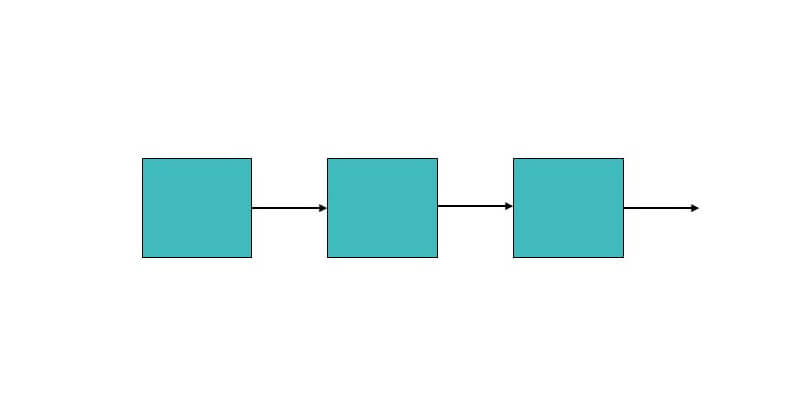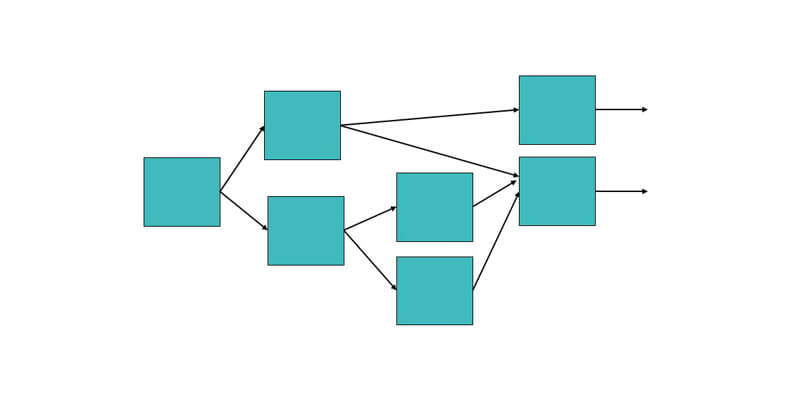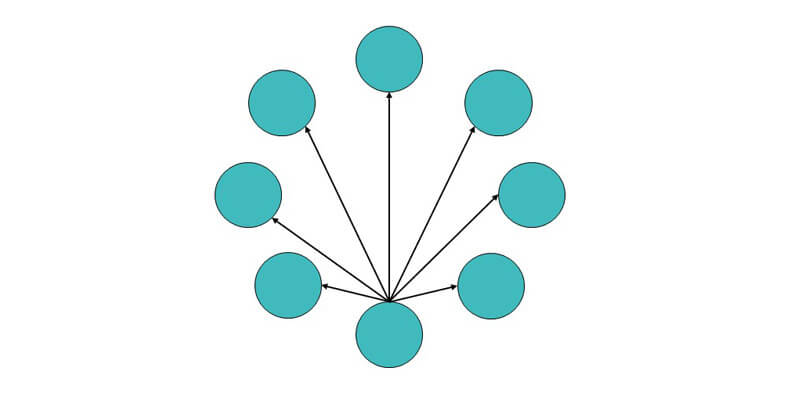Comparisons of Holochain

Many people want to compare Holochain, HoloHost and HoloFuel against others technologies, well we agree that it is an excellent idea in order to figure out and highlight all the differences, however, Holochain and Holo are quite complex. Therefore, before comparing them we need to define the comparison fields in order to be able to make a relevant work. And finally we found five different comparison axes: the architectures, the platforms, the peer-to-peer networks, the cloud services and finally the currencies.

Here we are comparing Holochain against the others existing decentralized architectures called Blockchain and DAG. It’s interesting to point out that they are all using the same pattern called Distributed Ledger Technology (DLT) in order to achieve the common goal of decentralization and removing any central authority.
| Blockchain | DAG | Holochain | |
|---|---|---|---|
| Hash-chain approach | Data-centric: a single global data set (linked list) is replicated across all nodes | Data-centric: network of individual transactions linked to multiple other transactions (tree) | Agent-centric: allows nodes to act independently or only in coordination with counterparties |
| Energy-use | POW algorithm are not at all energy efficient, however with POS it’s going better | It’s much more efficient compared to the Blockchain | It’s very efficient, even more compared to last POS algorithm |
| Transaction-volume | Even with POS the transactions per second are limited | Scalability and transactions per second are high | It’s scalable to infinity when the number of nodes is growing |
| Platform | Can run on specific computers only and it’s really complex to set up | Can run on a large type of computer because it doesn't need specific GPU | Can run easily on any device like your laptop, a Raspberry PI or even a mobile phone |
| Consensus-basics | Centralized network-wide consensus validation – Network must update in unison | The previous transaction validates the succeeding to achieve consensus | Distributed network for individualized validation – Then data is gossiped |
| Consensus effects | POW results in infinitely growing computational overhead for finite data set | DAG needs centralized system to secure the network | Proof of Service pays a node for his services: the hApps that he hosts and the computation that he executes |
| Networks using it | Bitcoin, Ethereum, EOS… | IOTA, NANO, Fantom, Hashgraph… | Holochain only at the moment |
| Date | 2008 | 2015 | 2019 |
| Schema |  |
 |
 |
After this comparative we can conclude that each architecture above has advantages and drawbacks and if you are still wondering which one is the best then the only good answer is: it depends. Indeed, Blockchain and DAG are correctly fitted to be used as transaction ledger and the smart-contracts can be useful in some cases but it seems to not be the best solutions for building decentralized applications. On the contrary Holochain is build to run fully decentralized applications. By fully decentralized we means that the website, the resources, the rules and the data are hosted in a decentralized way.

Here we are comparing Holochain against the others Blockchain designed to execute smart-contract functions like EOS, NEO, Ethereum (ETH) or Cardano (ADA). Moreover, we are comparing Holochain against the others kind of crypto platform that uses a Directed Acyclic Graphs (DAG) approach like IOTA or Fantom (FTM) for instance. And finally, we are comparing Holochain against the others kind of crypto platform like Hedera Hashgraph, Radix DLT or even Elastos (ELA).
We will never compare Holochain against others projects like Ripple (XRP) or even Stellar Lumens (XLM) because they have different goals, for instance these two are aimed to disrupt the financial settlements, on the contrary Holochain is aimed to disrupt the decentralized applications. Moreover, we will never compare Holochain against IPFS, Skycoin (SKY), Golem (GNT), Nano or any others project that is not a platform for building decentralized applications.
| NEO | ETH | ADA | TRX | EOS | IOTA | FTM | HASH | RADIX | HOLO | |
|---|---|---|---|---|---|---|---|---|---|---|
| Arch. | BC | BC | BC | BC | BC | DAG | DAG | DAG | Tempo | Holo |
| Cons. | dBFT | PoW | PoS | dPoS | dPoS | MCMC | aBFT | aBFT | Lamport | Gossip |
| TpS | 30 | 15 | 50 | 2000 | 3000 | 1000 | 10000∞ | 10000∞ | 3000∞ | 3000∞ |
| dApps | Any | Solidity | Plutus | Solidity | C/C++ | Abra | Rust/Go | Java/Scala... | Java/JS/Kotlin | Rust... |
| Open source | Yes | Yes | Yes | Yes | Yes | Partial | Yes | No | Yes | Yes |
| Mainnet | 2014 | 2015 | 2015 | 2018 | 2018 | 2016 | 2019+ | 2019+ | 2019+ | 2019+ |
As conclusion we can say that the projects using the Blockchain started to evolves and uses new algorithm in order to allows scalability. Actually, EOS is the leader in terms of adoption but again in 2019 new projects are arriving, for instance Tomochain (TOMO) and High Performance Blockchain (HPB) wants to do better than his predecessors. Regarding the DAG architecture, it's quite similar, we have two very promising projects called Fantom (FTM) and Hedera Hashgraph that are arriving on the market. And finally, we have new architectures that are inspired by the previous work. Radix seems to be promising however not really compared to Holochain. In fact, Holochain seems to have a real long-term vision in order to organize and connect the information together. the pattern that Holochain built is more fitted to build true decentralized applications.

In this section we are comparing the Holo Host model against the others cloud computing company for instance the well know Amazon Web Services (AWS) or Microsoft Azure (MA) and even Google Cloud Platform (GCP).
Since now 2010 it’s clear that the enterprises started to rethink the way that they host their applications, by application we mean basically all the services that an enterprise needs internally and mostly all the products that they distribute, for instance it can be a simple website or a complex web application or even a mobile application with millions of users. The enterprises now host their applications using cloud services mentioned above and this presents some advantages compared to the traditional way, for instance it simpler to scale when the user base grows quickly and also the enterprise doesn’t have any server to buy and maintain. Nowadays the global market for public cloud services in 2018 is 186 billion of dollars, according to Gartner's estimate. It is expected to reach 277 billion of dollars in 2021 according to IDC. In addition to this Cloud revolution, there is another trend called Serverless applications, that means nowadays it’s possible to develop a software without any needs to manage the server part of the software. Holochain is well placed to disrupt these both industries in an elegant manner, if they aren’t able to reach the mass adoption, at least, they will provide an alternative solution to the centralized services that already exists.
| Centralized Cloud | Decentralized Cloud | |
|---|---|---|
| 2017 | 145 B (+?%) | 300 M (+?%) |
| 2018 | 186 B (+28%) | 1200 M (+400%) |
| 2019 | 210 B (+12%) | 600 M (-50%) |
| 2020 | 240 B (+14%) | 1200 M (+100%) |
| 2021 | 277 B (+15%) | 1800 M (+50%) |
Warning, all of these projections are just a simple rounded estimations. for the centralized cloud we just based on data gathered from Gartner and IDC. For the decentralized cloud, we used the market capitalization from the eight biggest projects related to the decentralized cloud: Holo (HOT) + Golem (GNT) + Storj + iExec (RLC) + Siacoin (SC) + Filecoin (FIL) + MaidSafeCoin (MAID) + Sonm (SNM).

In this last section we want to point out the differences between the various models of currency in the world for instance the fiat currencies like the Euro or the Dollar, the crypto currencies like the Bitcoin or the Ether and then the HoloFuel which use a different model of a mutual credit.
| Dollar | Bitcoin | HoloFuel | |
|---|---|---|---|
| Issued by | Central bank | Miner | Algorithm |
| Circulating supply | Unlimited | Limited | Unlimited |
| Backed by | Trust | Trust | Computing power |
| Type | Fiat currency | Crypto currency | Crypto mutual credit |
As conclusion we can point out that the main differences between the fiat currencies and the crypto currencies are the issuance model, in fact the fiat are issued by central bank in order to regulate the entire economy, on the contrary the crypto currencies like Bitcoin or HoloFuel are issue by a predefined algorithm. To go deeper we can say that Bitcoin is more and more scarce because the code allows a limited amount of 21 million of Bitcoin available but the idea to be backed only by trust leads to a high volatility of price. The model created by Holo for the HoloFuel currency on the contrary leads to a stable value because the currency is backed by computing power and in addition to that the circulating supply is dynamic depending on the offer and the demand. The offer come from the hosts that generates HoloFuel by hosting dApps and the demand come from projects who need to host their dApps but from investor as well. It’s important to note that value stability doesn’t means price stability, in fact the value means the computing power. Regarding the price, in the long term, it will tends to increase and to be more and more stable as more and more people trusts and adopts the new paradigm. Another notable difference between HoloFuel and the others is about the mutual credit, you will find detailed information about this accounting method bellow.
Invest in HoloFuel
Become an early investor in $HOT! a very promising project which could be the future of local and global fractal currencies. Welcome to the future of decentralization.
Buy HoloFuel